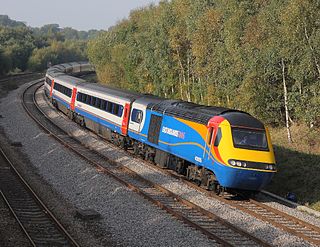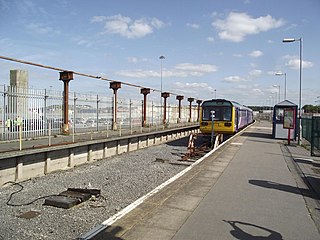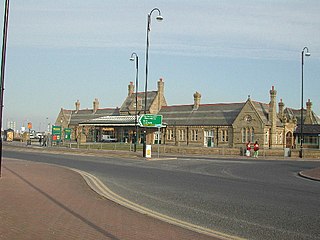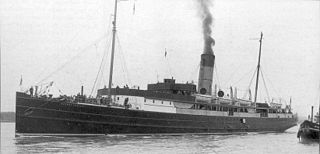Related Research Articles

The Midland Main Line is a major railway line in England from London to Sheffield in Yorkshire via the East Midlands. It comprises the lines from London's St Pancras station via Leicester, Derby/Nottingham and Chesterfield.

The London and North Western Railway was a British railway company between 1846 and 1922. In the late 19th century, the L&NWR was the largest joint stock company in the United Kingdom.

The London, Midland and Scottish Railway (LMS) was a British railway company. It was formed on 1 January 1923 under the Railways Act of 1921, which required the grouping of over 120 separate railways into four. The companies merged into the LMS included the London and North Western Railway, Midland Railway, the Lancashire and Yorkshire Railway, several Scottish railway companies, and numerous other, smaller ventures.

The Midland Railway (MR) was a railway company in the United Kingdom from 1844. The Midland was one of the largest railway companies in Britain in the early 20th century, and the largest employer in Derby, where it had its headquarters. It amalgamated with several other railways to create the London, Midland and Scottish Railway at grouping in 1922.

York Road railway station served the north of Belfast in Northern Ireland. It was formerly one of the three terminus railway stations in Belfast. The others were Great Victoria Street, and Queen's Quay.

The Morecambe branch line is a railway line in Lancashire, England, from Lancaster to Morecambe and Heysham, where trains connect with ferries to Douglas, Isle of Man. To reach Heysham, trains must reverse at Morecambe.

Lancaster railway station is a railway station that serves the city of Lancaster in Lancashire, England. It is one of the principal stations on the West Coast Main Line. It is located 20 miles 78 chains (33.76 km) from Preston and is the zero point for mileages onward to Carlisle.

Heysham Port is a railway station on the Morecambe Branch Line, which runs between Lancaster and Heysham Port. The station, situated 7+3⁄4 miles (12 km) west of Lancaster, serves Heysham Port in Lancashire. It is owned by Network Rail and managed by Northern Trains.

Wigan North Western railway station is one of two railway stations serving the town centre of Wigan, Greater Manchester, England.

Holyhead railway station serves the Welsh town of Holyhead on Holy Island, Anglesey. The station is the western terminus of the North Wales Coast Line 105+1⁄2 miles (170 km) west of Crewe and is managed by Transport for Wales Rail. It connects with the Port of Holyhead ferry terminal. The station is connected to the town centre by a stainless steel pedestrian/cycle bridge named The Celtic Gateway.

Hellifield is a railway station on the Bentham Line, which runs between Leeds and Morecambe via Skipton. The station, situated 36 miles 17 chains (58.3 km) north-west of Leeds, serves the village of Hellifield, Craven in North Yorkshire, England. It is owned by Network Rail and managed by Northern Trains.

Lisburn railway station serves the city of Lisburn in County Antrim, Northern Ireland.

The Belfast–Dublin Main Line is a main and busiest railway route on the island of Ireland that connects Dublin Connolly station in the Republic of Ireland and Belfast Lanyon Place station in Northern Ireland. It is the only railway line that crosses the Republic of Ireland–United Kingdom border.

TSS Duke of Lancaster is a former railway steamer passenger ship that operated in Europe from 1956 to 1979, and is beached near Mostyn Docks, on the River Dee, in north Wales. It replaced an earlier 3,600-ton ship of the same name operated by the London Midland and Scottish Railway company between Heysham and Belfast.

The Royal Highlander was a named passenger train travelling between London, England and Aberdeen, Scotland from 1927. Later it served Inverness, Scotland until it was withdrawn in May 1988.

Morecambe Promenade Station was a railway station in Morecambe, Lancashire, England. It was opened on 24 March 1907 by the Midland Railway and closed in February 1994. After twelve weeks break in passenger service for the revision of track work and signalling a new Morecambe station was opened on a site closer to the town centre.
The Duke of Argyll was a railway steamer passenger ship that operated in Europe from 1956 to 1975.

TSS Ramsey Town was a packet steamer which was initially ordered and operated by the Midland Railway Company under the name Antrim until it was acquired by the Isle of Man Steam Packet Company in 1928.
The Palatino Express or Rome Express is a historic express train operating between Paris, France, and Rome, Italy, since 1890. Under the name Rome Express the pre-war service operated daily until interrupted by the Second World War. The British film Rome Express (1932) derived its title and its setting from the train. The service was resumed after the war, and has operated with the name Palatino Express since 1969.

The packet steamer SS Rushen Castle was operated by the Isle of Man Steam Packet Company from its purchase in 1928 until it was sold for breaking in 1947.
References
- ↑ "The Ulster Express. Appropriate Title for Extra L.M.S. Service" . The News Letter . Northern Ireland. 14 June 1927. Retrieved 19 September 2017– via British Newspaper Archive.
- ↑ "Regimental Names for Engines" . Northern Whig . England. 18 January 1928. Retrieved 19 September 2017– via British Newspaper Archive.
- ↑ Allen, Cecil John (1983). Titled Trains of Great Britain. Ian Allan Publishing. pp. 178–179. ISBN 0711013098.
- ↑ "Regimental Names for Engines" . Northern Whig. England. 18 January 1928. Retrieved 19 September 2017– via British Newspaper Archive.
- ↑ The Encyclopedia of Titled Trains The Railway Magazine issue 1422 September 2019 page 107
- ↑ "Ulster Express again" . Belfast News-Letter. Northern Ireland. 1 September 1949. Retrieved 19 September 2017– via British Newspaper Archive.
- ↑ Heysham's Last Boat Trains The Railway Magazine issue 891 July 1975 page 343